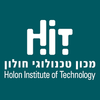Biography
With nearly 25 years of experience in the cyber-security industry, Guy held various positions in both corporates and startups.
As the CTO of the Rapid Incident Response firm, Profero, he focuses on making incident response fast and their resolution scalable, harnessing the latest technologies and a cloud-native approach.
Most recently, he led Intel’s Predictive Threat Analysis group, which focused on securing machine learning systems and trusted execution environments. At Intel, he defined the global AI security strategy and roadmap. In addition, he spoke at dozens of events on the research he and the group have done on Security for AI systems and published several whitepapers on the subject.
Guy is the BSidesTLV chairman and the former CTF lead, a Public speaker in well known global security events (SAS, t2, 44CON, BSidesLV, and several DefCon villages to name a few), and the recipient of the Cisco “black belt” security ninja honor – Cisco’s highest cybersecurity advocate rank.
For my blog, talks and workshops - please see productsecurity.info
Current
| Organization | Title | Duration |
|---|---|---|
 |
Profero - CTO and Co-Founder | 2020 - Present |
 |
Melior Security - Founder | 2019 - Present |
Volunteering
| Organization | Title | Duration |
|---|---|---|
 |
BSidesTLV - Chairman, CTF Lead | 2017 - Present |
 |
Hackeriot - Participant | 2022 - Present |
Past
| Company | Title | Duration |
|---|---|---|
 |
Security Research Manager | 2017-2019 |
 |
CTO | 2015-2016 |
 |
Cryptography, Supply Chain Security and Countermeasures Group Manager | 2010-2015 |
| Academy | Title | Duration |
|---|---|---|
 |
B.Sc. in Electrical Engineering (cum laude) | 2006-2010 |
 |
B.Sc. in Applied Mathematics | 2007-2010 |
| Military Service | Title | Duration |
|---|---|---|
 |
Executive Officer, Chief Technician | 1998-2005 |
Patents
DYNAMIC DETERMINISTIC USER PASSWORD GENERATION
There is provided a computer implemented method for dynamic deterministic generation of a user password for access to a secure application, comprising: receiving from a user interface, a master phrase entered by a user, and an indication of one secure application of a plurality of secure applications for access by the user, receiving a master salt associated with an indication of the user, dynamically computing a master key from the master phrase and the master salt, receiving a service payload associated with an indication of the one secure application and the indication of the user, dynamically computing a service password from the master key and the service payload, and providing the service password for accessing the one secure application.
Publication number: US202063070845P
SECURING SYSTEMS EMPLOYING ARTIFICIAL INTELLIGENCE
Techniques and apparatuses to harden AI systems against various attacks are provided. Among the different techniques and apparatuses, is provided, techniques and apparatuses that expand the domain for an inference model to include both visible classes and well as hidden classes. The hidden classes can be used to detect possible probing attacks against the model.
Publication number: US2021319098A1
PROTECTION FOR INFERENCE ENGINE AGAINST MODEL RETRIEVAL ATTACK (July, 2018)
An embodiment of a semiconductor package apparatus may include technology to perform run-time analysis of inputs and outputs of a machine learning model of an inference engine, detect an activity indicative of an attempt to retrieve the machine learning model based on the run-time analysis, and perform one or more preventive actions upon detection of the activity indicative of the attempted model retrieval. Other embodiments are disclosed and claimed.
Publication number: US2019050564A1
Academic Publications
Active contours: Generalization of the snake mode
Segmentation is one of the fundamental issues in the field of image processing and computer vision. Various approaches include differentiating an object in the image as a final goal or for further processing (medical diagnosis, surveillance, 3-D reconstruction and more). Snakes, a model proposed by Kass, Witkin, and Terzopoulos in 1987, provides an efficient method for segmenting an object through the minimization of its energy. The advantage of snakes is in its ability to use high-level data given by the algorithm operator, as opposed to other methods such as the Laplace technique. The snakes model inherently imposes strong constraints on a given image in order to successfully segment an object. In this paper, the use of adjustment methods is described, which allow us to generalize the snake model to a wider range of applications. Through the use of pre-processing techniques, the model’s constraints were softened. The main theoretical model and its use in facing a real life image is presented.
Differential Diagnostics of Thalassemia Minor by Artificial Neural Networks Model
Current methods used to diagnose the thalassemia minor (TM) patients require high-cost assays, while broader screening based on routine blood count has limited specificity and sensitivity. This study developed a new screening technique for TM patients’ diagnosis. The study enrolled 526 patients database that included 185 verified α and β TM cases, and control group consisted of iron-deficiency anemia (IDA), myelodysplastic syndrome (MDS), and healthy patients. More than 1,500 artificial neural networks (ANNs) models were created and the networks that gave high accuracy were selected for the study. TM patients were identified from the general database using the best-optimized ANNs. Comparison between three or six routine blood count parameters determined a slightly higher accuracy of the model with the three-parameter scheme, including mean corpuscular volume, red blood cell distribution width, and red blood cell. Based on these parameters, we were able to separate TM patients from the control group and MDS group, with specificity of 0.967 and sensitivity of 1. Including IDA patients into comparison gave lower but, still, very good values of specificity of 0.968 and sensitivity of 0.9. ANN-based TM diagnostics should be used for broad automatic screening of general population prior diagnosis with high-cost tests." abstract_short = “Current methods used to diagnose the thalassemia minor (TM) patients require high-cost assays, while broader screening based on routine blood count has limited specificity and sensitivity. More than 1,500 artificial neural networks (ANNs) models were created and the networks that gave high accuracy were selected for the study. ANN-based TM diagnostics should be used for broad automatic screening of general population prior diagnosis with high-cost tests.
